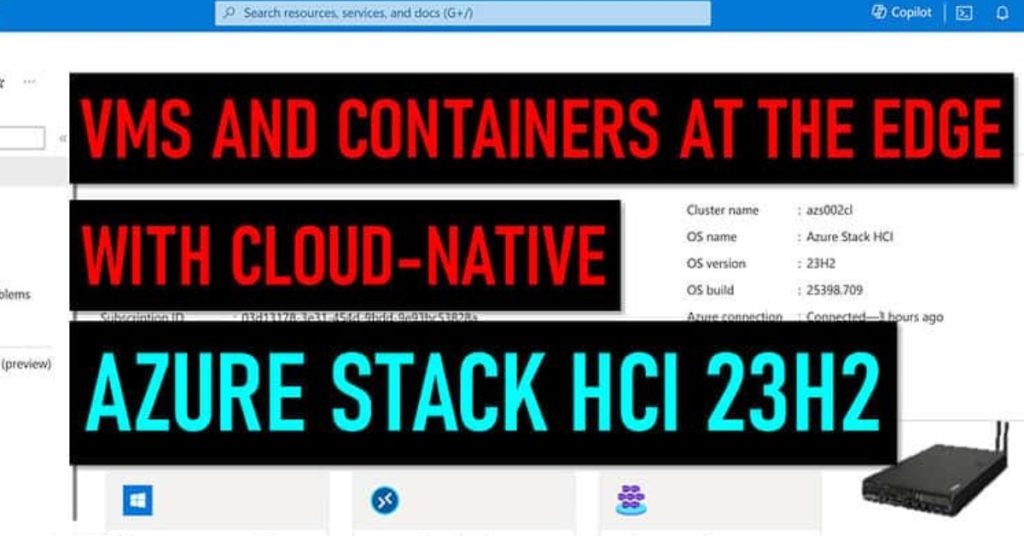
At Microsoft Ignite 2023, Microsoft unveiled the latest version of Azure Stack HCI, 23H2. In this video, we explore how you can run your virtual machines (VMs) and container workloads both on-premises and at the edge.
Dive into the innovative world of hybrid cloud environments with my latest video, "VMs and Containers at the Edge with Cloud-Native Azure Stack HCI 23H2." This release marks a new era of agility and innovation for Azure Stack HCI. Version 23H2 is packed with new capabilities, including seamless integration with Azure Kubernetes Service (AKS) via Azure Arc, bringing the power of cloud-native services directly to your data center and edge locations. Experience enhanced scalability, improved resource utilization, and streamlined management with Azure Arc-enabled Azure Stack HCI. Whether you’re a seasoned IT professional or just starting your cloud journey, this video will provide valuable insights into maximizing your infrastructure’s potential with Microsoft Azure hybrid solutions.
What is Azure Stack HCI?
Azure Stack HCI is a hyperconverged infrastructure (HCI) solution that hosts Windows and Linux VM or containerized workloads and their storage. It’s a hybrid product that connects the on-premises system to Azure for cloud-based services, monitoring, and management.
An Azure Stack HCI system consists of a server or a cluster of servers running the Azure Stack HCI operating system and connected to Azure. You can use the Azure portal to monitor and manage individual Azure Stack HCI systems as well as view all of your Azure Stack HCI deployments. You can also manage with your existing tools, including Windows Admin Center and PowerShell.
Why Azure Stack HCI?
Customers choose Azure Stack HCI for many reasons, including:
- It provides industry-leading virtualization performance and value.
- You pay for the software monthly via an Azure subscription instead of upfront with hardware.
- It’s familiar for Hyper-V and server admins, leveraging existing virtualization and storage concepts and skills.
- It can be monitored and managed from the Azure portal or using on-premises tools such as Microsoft System Center, Active Directory, Group Policy, and PowerShell scripting.
- It works with popular third-party backup, security, and monitoring tools.
- Flexible hardware choices allow customers to choose the vendor with the best service and support in their geography.
- Joint support between Microsoft and the hardware vendor improves the customer experience.
- Solution updates make it easy to keep the entire solution up-to-date.
Comments (0)